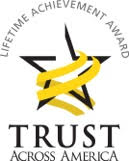
By Linda Fisher Thornton
By Linda Fisher Thornton
This series of posts shares strategies for repairing organizational trust. It was inspired by conversations with other members of the Trust Across America Trust Alliance and my work as part of the Trust Alliance TAP team. #tap2021
Trust Repair Part 1 addressed the importance of Accountability and strategies for building a robust accountability system. Trust Repair Part 2 shared strategies for improving Transparency.
Trust Repair Part 3 includes how to improve a third area the Trust Alliance found to be a common problem – Notice. This important element of trust requires us to “seek out and listen to diverse perspectives – every voice can matter.” (TAP Principles, Trust Across America Trust Alliance)
We all have selective attention, whether or not we admit it. In formulating plans, we tend to pay the most attention to people closest to us in the hierarchy. The danger in that is that sometimes the most important information comes from an unexpected source. We’ll easily miss it if we don’t make it a priority to “Notice” what impacts the success of the organization in a much broader way.
Here are some strategies for improving the breadth and depth of “Notice” throughout your organization:
5 Notice Strategies
Keep an Ear to the Ground
Walk around and notice what people are talking about. While this sounds simple, it is also transformational. You may learn months in advance about a problem that will happen if leaders don’t intervene, and you will have time to fix the problem before it blows up. This is a simple but powerful strategy that also encourages input. When people see you frequently, they can more easily share ideas or concerns.
Welcome Input From Everyone
Organizational success depends on listening to what all stakeholders need and expect, and that includes employees. No one person can see the whole picture. If you’re just listening to the input of leaders and employees in your direct work group, you’re missing rich information that is right at your fingertips that can ensure the success of the organization. Challenges often happen across work groups and functional roles, and that’s why listening to a diverse collection of voices outside of your core group is so important.
Lead to Support the Whole Organization
When you keep an ear to the ground and welcome input from across the organization, you will become aware of challenges people who are not in your area are having. Although it may not be easy, address those problems as an advocate just as carefully as you would an issue in your own group. That sends the message “we are all working together” and that builds trust.
Apologize and Fix Your Trust Errors
When the feedback you receive is about something you could have done better, apologize, take responsibility, address it with people, and make sure that it doesn’t happen again. People may be forgiving the first time it happens, but not the fifteenth.
Act on Input Regardless of the Source
Sometimes the feedback you get from unlikely places is the most important. Follow up to thank people who share ideas and concerns, no matter where they are in the organizational hierarchy. Take action on the ones that are most important, not just the ones that come from leaders. Organizational trust only works when it works for everyone.
Notice requires non-judgmental information gathering and analysis, and a non-defensive response. Does your organization pass this test in every department every day? If you’re not sure, get to work using these 5 Notice Strategies and keep improving until you can answer “Yes!”
To learn more, visit the Trust Across America Blog and join the #Trust conversation across platforms.


Reblogged this on Gr8fullsoul.
LikeLike